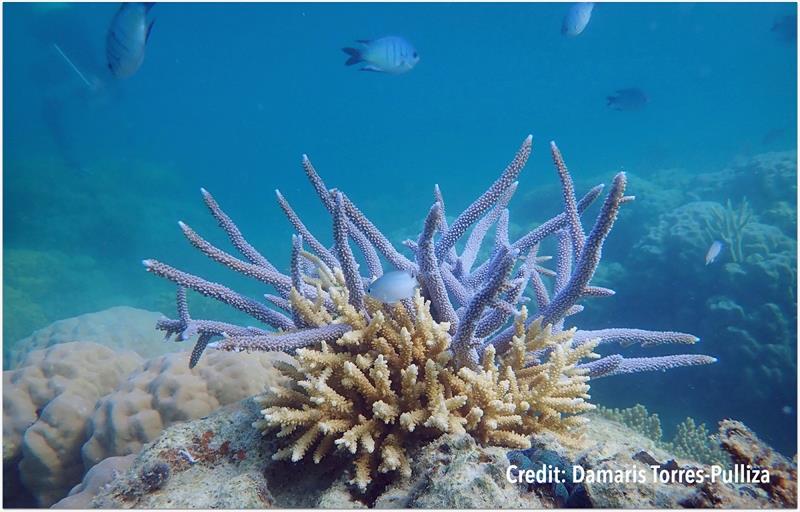
Nooks, crannies and critters
by Melissa Lyne 29 Aug 2020 06:23 UTC

More complex habitats tend to contain more species. In this image, reef fishes and brittlestars use corals as habitat and for protection © Damaris Torres-Pulliza
Researchers have discovered a new way to measure the complexity of the world's habitats - a crucial factor as environments across the globe face extraordinary change.
The study was led by Damaris Torres-Pulliza, a PhD candidate at the University of Hawai'i at the Hawai'i Institute of Marine Biology (HIMB). Ms Torres-Pulliza and a team of ecologists and engineers, including from the ARC Centre of Excellence for Coral Reef Studies at James Cook University (Coral CoE at JCU), developed a relatively simple way to standardise how habitat complexity is measured.
The researchers say habitats range from the abyssal trenches to the tops of mountains, from coral reefs to tundra. These can be relatively simple, flat surfaces to highly complex three-dimensional structures—a concrete driveway to an old brick-pile in the backyard, respectively.
The researchers studied the coral reefs encircling Lizard Island, on the Great Barrier Reef, using a mix of robots and underwater cameras to measure their three-dimensional structure.
Associate Professor Mia Hoogenboom from Coral CoE at JCU said places with lots of nooks and crannies contain lots of living things.
"We spent many hours underwater counting and identifying nearly 10,000 corals found on the 3D maps," said Dr Hoogenboom.
"The new method we developed can be used in both marine and terrestrial environments, allowing us to understand how complexity and biodiversity are related to each other in all kinds of habitats," she said.
Dr Hoogenboom says complex habitats tend to contain more biodiversity, both in terms of more individuals and more species. This relationship is important, because it highlights a relatively simple mechanism by which to manipulate biodiversity. If habitat complexity decreases, one would expect biodiversity to decrease.
Dr Joshua Madin, an associate researcher at HIMB, says habitats are characterised by three factors: rugosity, fractal dimension and height range.
"If you think of your backyard brick-pile, rugosity tells you the amount of surface area there is for critters to live on; fractal dimension tells how many critters of different sizes can fit in among the bricks, and; height range sets an upper limit to critter size," Dr Madin said. "You won't find an elephant in your bricks, right?"
The analysis suggests only two of the three measurements are needed to characterise the structure of a habitat. This means ecologists can pick the two aspects of complexity that are easiest to measure and will automatically know the third-similar to calculating the third angle of a triangle if two angles are already known.
The theoretical breakthrough means scientists can back-calculate a richer picture of habitat complexity from previous studies and compare habitat complexity among different ecosystems.
"We found that using the three metrics together dramatically improves our ability to predict the distribution of biodiversity. This helps us understand how the structure of a place affects who lives there," said Dr Maria Dornelas of the University of St Andrews.
Though the work is new and currently only applied to coral reefs, the researchers hope that their new theory might become the backbone of research into the relationships between habitat complexity and biodiversity in all ecosystems, both underwater and on land.
Paper
Torres-Pulliza D, Dornelas M, Pizarro O, Bewley M, Blowes S, Boutros N, Brambilla V, Chase T, Frank G, Friedman A, Hoogenboom M, Williams S, Zawada K, Madin J. (2020) 'A geometric basis for surface habitat complexity and biodiversity'. Nature Ecology and Evolution. DOI: 10.1038/s41559-020-1281-8.